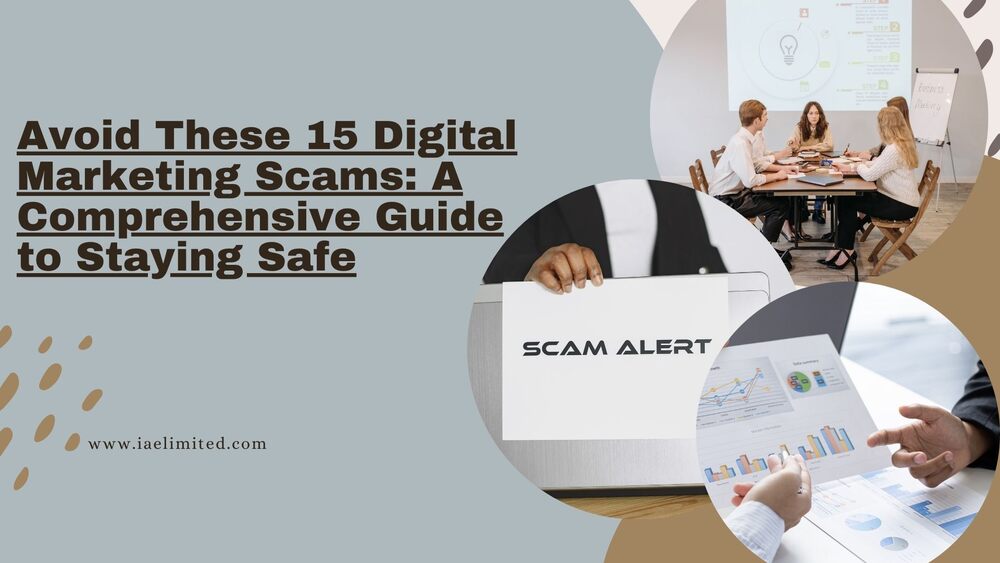
A content marketing strategy in e-commerce is a thorough approach centred on creating and sharing valuable, relevant content to attract and engage potential customers throughout their purchasing journey.
This strategy is essential for building relationships with consumers, enhancing brand awareness, and ultimately boosting sales.
Key Elements of an E-commerce Content Marketing Strategy
Table of Contents
Understanding the Buyer’s Journey: E-commerce content marketing aims to support customers at different stages of their buying journey—from awareness to consideration and decision-making. By offering targeted content that addresses specific needs and queries, brands can steer potential buyers towards making informed purchasing decisions.
Types of Content
- Educational Content: This encompasses how-to guides, tutorials, and informative blog posts that help customers gain a better understanding of the products. For instance, video demonstrations can effectively highlight product features and benefits.
- Visual Content: High-quality images and videos are vital in e-commerce, as they enable customers to visualise the products before buying. Engaging visual storytelling can greatly enhance the shopping experience.
- User-Generated Content: Encouraging customers to share their experiences or reviews fosters trust and authenticity around the brand. This type of content often resonates well with potential buyers.
- Social Media Engagement: Using platforms like Instagram and Facebook to share content not only extends reach but also nurtures community engagement around the brand.
SEO Integration: A successful content marketing strategy integrates search engine optimisation (SEO) to enhance visibility in search results. By researching relevant keywords and incorporating them into content, e-commerce sites can draw organic traffic from search engines, leading to increased sales opportunities.
Content Distribution Channels: E-commerce brands should utilise multiple channels for content distribution, including:
- Blogs: Regularly updated blogs can drive traffic and improve SEO.
- Social Media: Sharing content on social media platforms helps reach a broader audience.
- Email Marketing: Personalised email campaigns can nurture leads and keep existing customers engaged with timely and relevant content.
Measuring Success: To evaluate the effectiveness of a content marketing strategy, e-commerce businesses should monitor key performance indicators (KPIs) such as website traffic, conversion rates, engagement metrics, and customer feedback. Continuous assessment allows brands to refine their strategies based on what resonates best with their audience.
Understanding Your Target Audience
Conducting thorough audience research:
- Utilize analytics tools: Leverage Google Analytics, social media analytics, and heatmap tools to gain insights into your website visitors’ behavior.
- Analyze customer data: Examine purchase history, demographics, and engagement metrics to identify key trends and preferences.
- Conduct customers survey and interviews: Gather direct feedback from your customers to understand their needs, pain points, and aspirations.
Identifying customer pain points and desires:
- Empathize with your customers: Put yourself in their shoes and understand the challenges they face.
- Analyze customer reviews and feedback: Identify recurring themes and common complaints.
- Conduct customer interviews: Ask open-ended questions to uncover their motivations and desires.
Want to read more on how to Identify customer pain points and desires? check out this wonderful article from freshworks.com.
Creating buyer personas:
- Develop detailed profiles: Create fictional representations of your ideal customers, including their demographics, interests, behaviors, and goals.
- Use personas to guide content creation: Tailor your content to address the specific needs and concerns of your buyer personas.
Setting Clear Goals and Objectives
Define specific goals:
- Align with overall business objectives: Ensure your content marketing goals contribute to your broader business strategy.
- Be SMART goals: Make your goals Specific, Measurable, Achievable, Relevant, and Time-bound.
Set measurable KPIs:
- Track key metrics: Monitor metrics such as website traffic, conversion rates, social media engagement, and brand awareness.
- Use analytics tools: Leverage tools like Google Analytics and social media analytics platforms to track your progress.
Conducting a Content Audit
Assess content quality:
- Evaluate relevance: Ensure your content is aligned with your target audience’s interests and needs.
- Assess engagement: Analyze metrics like time on page, bounce rate, and shares to gauge content performance.
- Identify outdated or irrelevant content: Remove or update content that is no longer relevant or valuable.
Analyze performance:
- Use analytics tools: Track key metrics like website traffic, organic search rankings, and social media engagement.
- Identify top-performing content: Understand what resonates with your audience and replicate successful strategies.
- Identify underperforming content: Analyze why certain content is not performing well and make necessary adjustments.
Identify gaps:
- Analyze your competitors: Identify topics or formats that your competitors are covering successfully.
- Identify unmet customer needs: Look for opportunities to address specific pain points or desires of your target audience.
- Create a content gap analysis: Develop a list of topics or formats that you need to cover to fill the gaps in your content strategy.
Creating a Content Calendar
Plan your content topics and themes:
- Align with your business goals: Ensure your content topics support your overall business objectives.
- Consider seasonal trends: Tailor your content to relevant holidays, events, or industry trends.
- Create a content theme: Develop a central theme or focus for your content to provide a cohesive narrative.
Determine content types:
- Experiment with different formats: Explore various content formats like blog posts, videos, infographics, podcasts, and social media posts.
- Consider your audience’s preferences: Choose formats that resonate with your target audience and their preferred consumption habits.
- Create a content mix: Mix up different content types to keep your audience engaged and avoid monotony.
Schedule content publication dates:
- Create a calendar: Use a content calendar to plan and schedule your content publication dates.
- Consider peak traffic times: Publish content during times when your target audience is most likely to be active.
- Allow for flexibility: Build some flexibility into your calendar to accommodate unexpected events or opportunities.
Producing High-Quality Content
Write compelling and informative articles:
- Use clear and concise language: Avoid jargon and technical terms that may confuse your audience.
- Structure your content effectively: Use headings, subheadings, and bullet points to improve readability.
- Tell a story: Engage your audience by weaving a compelling narrative around your topic.
Optimize content for search engines (SEO):
- Conduct keyword research: Identify relevant keywords and phrases that your target audience is searching for.
- Optimize on-page elements: Use keywords in your headlines, subheadings, meta descriptions, and image alt text.
- Build backlinks: Acquire high-quality backlinks from reputable websites to improve your search engine rankings.
Utilize visuals and multimedia:
- Use high-quality images and videos: Create visually appealing content that captures attention.
- Add captions and transcripts: Make your visual content accessible to users with disabilities.
- Use infographics and data visualizations: Present complex information in a visually engaging way.
Promoting Your Content
Share content on social media platforms:
- Identify your target audience’s preferred platforms: Choose platforms where your target audience is most active.
- Create engaging social media posts: Use eye-catching visuals, compelling captions, and relevant hashtags.
- Encourage social sharing: Add social sharing buttons to your content to make it easy for users to share.
Leverage email marketing:
- Build an email list: Collect email addresses from your website visitors and social media followers.
- Send targeted email campaigns: Create personalized email content based on your subscribers’ interests and preferences.
- Include a call to action: Encourage subscribers to visit your website or take other desired actions.
Utilize paid advertising:
- Identify your target audience: Create targeted ad campaigns that reach your ideal customers.
- Choose the right platforms: Select advertising platforms like Google Ads, Facebook Ads, or Instagram Ads that align with your target audience.
- Track and optimize your campaigns: Monitor the performance of your paid ads and make adjustments as needed.
Build relationships with influencers:
- Identify relevant influencers: Find influencers in your industry who have a following that aligns with your target audience.
- Reach out and collaborate: Offer them valuable content or opportunities to collaborate.
- Leverage their reach: Promote your content through influencer endorsements or guest posts.
Measuring and Analyzing Results
Track key metrics:
- Use analytics tools: Leverage tools like Google Analytics, social media analytics, and CRM software to track your performance.
- Monitor website traffic: Track the number of visitors to your website, their behavior, and their source of origin.
- Analyze engagement metrics: Measure metrics like likes, shares, comments, and time on page to gauge audience engagement.
- Track conversions: Monitor conversion rates for key actions like purchases, sign-ups, or lead generation.
Use analytics tools:
- Leverage data-driven insights: Use analytics tools to identify trends, patterns, and areas for improvement.
- Create custom reports: Develop reports that provide the specific data you need to make informed decisions.
- Share insights with your team: Communicate key findings and recommendations to your team.
Make data-driven adjustments to your strategy:
- Identify areas for improvement: Analyze your data to identify areas where you can optimize your content marketing efforts.
- Make necessary adjustments: Implement changes based on your findings to improve your results.
- Continuously monitor and refine: Regularly review your data and make ongoing adjustments to your strategy.
Case Studies and Examples
Showcase successful e-commerce content marketing campaigns:
- Highlight best practices: Share examples of successful campaigns that have achieved measurable results.
- Explain the strategies used: Discuss the specific tactics and techniques that contributed to the campaign’s success.
- Learn from their experiences: Identify key takeaways and lessons learned from these case studies.
Highlight best practices and lessons learned:
- Summarize key insights: Extract the most valuable insights from the case studies.
- Provide actionable tips: Offer practical advice that businesses can apply to their own content marketing strategies.
- Encourage experimentation: Encourage businesses to try different approaches and learn from their experiences.
In Conclusion

By following these guidelines and leveraging the insights from case studies, you can create a highly effective content marketing strategy that drives traffic, generates leads, and boosts your e-commerce business.
Remember to continuously monitor your performance, analyze your data, and make data-driven adjustments to ensure your strategy remains aligned with your evolving goals and the changing needs of your target audience.
In case you missed it, we recently published a post on, The Impact of AI on Digital Marketing Strategies. The article will delve you into the profound impact of AI on digital marketing, exploring its role in data analysis, personalization, automation, and more.





